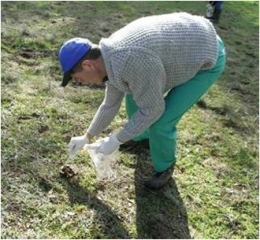
Name
Bruce R. Hoar, DVM, Ph.D.
Title
Assistant Professor of Ruminant Herd Health
Institution
University of California, Davis
Education
2001: Ph.D., University of California Davis, Epidemiology
1996: M.S., University of Saskatchewan, Epidemiology
1985: DVM, University of Saskatchewan
What brought you to the University of California, Davis?
It was the opportunity to work on my PhD at one of the top veterinary schools in the country. I am originally from Canada, born and raised with cattle, pigs, and chickens out on a farm, and became interested in herd problems, specifically, diseases of herds and groups.
How did you learn about the Center for Produce Safety? What led you to apply for funding?
When CPS was first being established, a group from the veterinary school was invited to a presentation. During the presentation we learned how animal agriculture could fit into the goals of CPS. When it came to applying, we had just been keeping an eye out for grants. We recognized a need particularly for research addressing what role, if any, sheep might play in produce contamination, and thought our research was a good fit for the objectives.
CPS awarded funding to your project “Food safety risks associated with sheep grazing in vegetable stubble fields." What are the key factors influencing this field of inquiry? What will the industry gain from your research?
Right now, recommendations are being made with a minimal amount of credible scientific data. I hope to provide data to help make future recommendations regarding land use near produce fields. Food-borne illness linked to consumption of produce has resulted in many questions being raised regarding animal agriculture. This has had a big influence on our research program, and I am hoping to be able to answer some of the critical questions. At the same time, we want data to help better inform decisions being made about use of land, grazing possibilities and most importantly sustainable agriculture.
Where do you see the field of food safety research five years down the road?
I see the field of food safety focusing on risk management and mitigation, at least from my end. I hope society begins to maximize use of available land for meat and produce.
Aside from working in the laboratory, how else do you spend your time?
Personally, I collect field samples on farms, ranches, etc., which takes up 50% of my clinical time. I do not spend time myself in the labs, but manage a team that takes care of that kind of work. I spend the other 50% teaching classes, conducting research and doing service. Outside of work, my eight year old son keeps me busy with his Boy Scout activities, such as hiking and camping.
Lastly, what would you consider a career highlight?
I would have to say completing my Ph.D. at the same time as my wife has to be a career highlight. Also being awarded funding from the Center for Produce Safety.